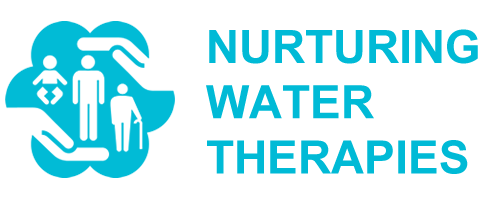What are the different types of water therapy?
Ai Chi
Drawing inspiration from Tai Chi, Ai Chi is a combination of deep breathing and slow broad movements of the arms, legs, and torso. Ai Chi can help patients manage pain, hypertension, diabetes, arthritis, anxiety, and many other physical and mental ailments.
Ai Chi Ne
“Ne” is the Japanese word for “two”. Ai Chi Ne uses the same moves as Ai Chi but holding/touching one another. This technique is used for balance, mobility and range of motion deficits (e.g. CP, MS, CVA/Stroke, and neurological and motor skill deficits).
AquaStretch ™
The facilitator progresses a client through a series of starting positions and hand grips while encouraging movement. By then applying a basic procedure to client specific areas of tightness or pain, the facilitator works with the client to restore motion.
BackHab
BackHab is an aquatic walking program applicable to all skill levels using various strides and stretches to accomplish a variety of benefits including gait re-training, balance, coordination, trunk stability, and muscular endurance and strength. It is excellent for various orthopedic and chronic conditions.
Bad Ragaz
The patient is led through a series of movements while being supported horizontally in the water with the help of aquatic devices. It is a method of muscle re-education utilizing specific patterns of resistance, endurance, elongation, relaxation, range of motion, and tonal reduction.
Burdenko
Water and land based therapy that starts the patient in the water working on balance and postural alignment. Gradually, exercises include flexibility, coordination, endurance, speed, and strength. These six qualities of movement, used in this developmental sequence are the foundation of this method.
Feldenkrais
Aquatic Feldenkrais places emphasis on increasing self-awareness through movement. This guided exploratory process helps reduce pain and increase the ease of movement.
Halliwick
Based on the adaptation of scientific and hydrodynamic principles to the behavior of the human body in water, the Halliwick Method emphasizes the goal of individual independence. Individuals with orthopedic conditions benefits most from this technique.
Lyu Ki Dou
Derived from the Japanese translation of “Floating Life Energy Pathways”, Lyu Ki Dou emphasizes on the transfer of vital life-giving energy by hands-on healing from the therapist to the client/patient by using the properties of water.
Massage
Water massage, the use of soft tissue manipulation and body mobilization techniques in water warmer than skin temperature (92-93F), is evolving as a therapeutic method. Practitioners find that the use of massage in water is creative, innovative, and individualized, and no two practitioners have the same approach.
Proprioceptive Neuromuscular Facilitation (PNF)
PNF is an approach to therapeutic exercise which aims to enhance both active and passive range of motion and optimize motor performance and rehabilitation. Exercises consist of spiral and diagonal patterns and must incorporate three components of motion: flexion or extension, adduction or abduction, and rotation.
Unpredictable Command Technique
Two or more motor movements are done simultaneously in UCT. Improved somatic awareness and motor control can be achieved through the challenge to do a variety of constantly-changing familiar and unfamiliar activities. UCT improves voluntary control, awareness of movement and body in space, and enhanced mental concentration.
Water Dance (Wassertanzen)
Water Dance is a dynamic movement therapy that includes work below the water surface with the aid of nose clips. It is different from Watsu because of the challenge it presents for a person to surrender control of his breach to go underwater.
Water Pilates
Pilates exercises are adapted to the water environment. This body conditioning program improves strength, flexibility, and range of motion, and also encourages musculoskeletal alignment. The main tenets are resisting your own weight, controlled breathing, spine alignment, and abdominal strengthening.
Water Yoga
Hatha yoga poses performed in warm, waist- to chest-depth water develop strength and static balance simultaneously. In addition, range of motion increases in coordination with diaphragmatic breathing and long exhalations.
Watsu
Watsu (water + shiatsu) is a cradling, one-on-one program that is experiences in a very warm (approximately 94F) pool. The client is held in the water by the practitioner and moved using the water to massage the body. Shiatsu (acupressure) points are stimulated along the meridiance of the body during the massage. Watsu is used for pain reduction, increased range of motion, increased circulation, psychological problems, relaxation, and reduction of stress. It has been used in rehabilitation programs for people with orthopedic problems or physical disabilities, for pregnant mothers, and the elderly.
Yogalates
Fluid Yogalates, developed by Dr. Mary Wykle, combines Iyengar Yoga, Pilates and Ai Chi. Static poses and core stabilization exercises are transitioned with circular movements and emphasis on deep breathing to create a continual fluid program. The objectives are increased body awareness, strength, range of motion, relaxation, and an inward focus.



